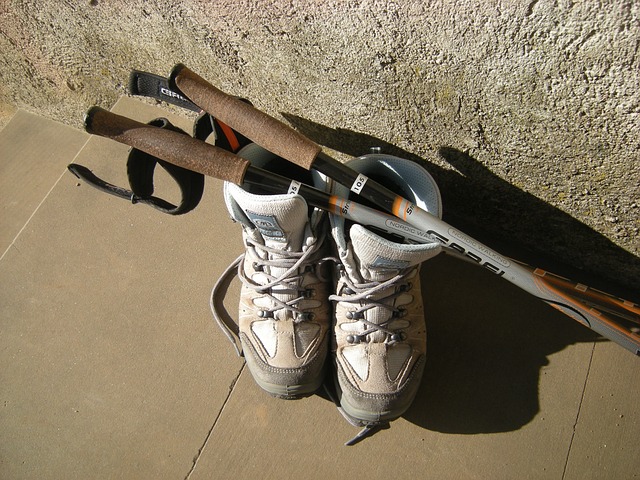I’m so thrilled to share this step-by-step guide on how to break in hiking boots with you because having comfortable hiking boots is a real game-changer for every hiker. We all know the saying, “no pain, no gain,” but when it comes to our feet, comfort and fit are paramount to enjoying our hike. And that’s where the importance of breaking in your hiking boots comes in.
Ever experienced blisters or discomfort from a new pair of boots during a hike? I can tell you, it’s not fun. I have had my fair share of those painful experiences, so I want to discuss how to break in hiking boots. As much as we all love getting our hands on fresh boots, they are not hike-ready right off the bat. Breaking them in properly can make all the difference, and I’m here to guide you through that process.
In this step-by-step guide, I’ll explore why you should break in your boots, how long it usually takes, and how to do it quickly without compromising comfort. Let’s delve in and make your hiking boots the perfect companion for your next adventure!
The necessity of breaking in hiking boots
You might be wondering, “Why do I need to break in my hiking boots? They’re brand new; shouldn’t they be good to go?” Well, not exactly. Although hitting the trails immediately with your new boots is tempting, it can cause discomfort and even injuries, which nobody wants during a beautiful hike.
Breaking in your boots is like introducing your feet and the shoes to each other. It’s about creating that sweet relationship where both are comfortable with each other. Fresh out of the box, hiking boots tend to be stiff and may have tight spots that can cause blisters and other discomforts. As you break them in, the material softens and molds to the shape of your feet. It’s like creating a custom fit, allowing you to walk, climb, or run on trails with minimal discomfort.
It’s also worth noting that not all hiking boots require the same break-in time. Some shoes, especially those made of synthetic materials, might take less time to break in compared to leather boots. The break-in period also depends on how often you wear them and the conditions in which you wear them.
The bottom line? Don’t skip the break-in period! Yes, it takes a little patience and effort, but ensuring you can enjoy your hikes pain-free is well worth it. So now let’s address a common question: “How long does it take to break in hiking boots?”
How long does it take to break in hiking boots?
As a seasoned hiker, one of the most common questions is, “How long does it take to break in hiking boots?” Like many things in life, the answer depends on a few factors.
First, let’s talk about the type of boots you have. Leather boots, while highly durable and supportive, usually take longer to break in than synthetic boots. If you’re dealing with full-grain leather boots, you might look at a few weeks of regular wear to fully break them in. On the other hand, synthetic boots are typically lighter and softer and may require only a few days to a week.
The design of the boot also plays a part. Heavy-duty boots with more robust and rigid designs require longer break-in time than lightweight, flexible ones.
Your activity level is another factor to consider. If you wear your boots daily on walks and during your chores, they’ll break in faster than wearing them only once a week.
Generally, a good rule of thumb is to wear your new boots for a few hours each day over 1-2 weeks. By the end of this period, your shoes should be well on their way to being properly broken in. However, everyone’s experience can vary, so listen to your feet! If you’re still experiencing discomfort after this time, keep at it. Your boots will eventually mold to your feet perfectly.
Of course, you might only sometimes have weeks to break in your new hiking boots. That’s where a few handy tricks can help you speed up the process without damaging your shoes or feet. So, let’s explore how to break in hiking boots fast!
Steps to break in hiking boots fast
It’s time to talk about how to break in hiking boots fast, a lifesaver when you’re short on time before your big hike. Here are 5 methods that can expedite the process:
- Wear them around the house: Start by simply wearing your new boots around the house. Put on the socks you intend to wear for hiking to replicate the conditions as closely as possible. Increase the time you wear them gradually to get your feet accustomed to the boots.
- Use a conditioning cream or oil (for leather boots): If you have leather boots, applying a small amount of conditioning cream or oil can soften the material and make it more flexible. Be sure to follow the instructions on the product and avoid overusing it, as it can oversaturate the leather.
- Use the “wet” method: This involves getting your boots slightly wet (not soaked) and then wearing them until they dry. The theory is that as the shoes dry, they conform to the shape of your feet. However, this method should be used cautiously, as excessive water can damage some boots.
- Gradually increase the difficulty of your walks: Start by walking on flat, easy surfaces. Then, gradually increase the difficulty of your walks by finding some inclines or rougher terrain. This allows your boots to adapt to different conditions while molding to your feet.
- Use a boot stretcher or professional boot stretching service: If you’re pressed for time, consider using a boot or a professional service. They can help increase the width of your boots, making them more comfortable.
Remember, though these methods can help you break in your boots faster, they should only replace the traditional break-in period partially. It’s still essential to give your feet and your boots time to adjust to each other. Patience truly is vital when breaking into hiking boots.
In the next section, I’ll explain specific tips for those of you with leather hiking boots. Leather boots require some extra TLC (Textile-Linge-Chaussures), but they can be the most comfortable boots you’ve ever owned with the proper care.
Tips on how to soften leather hiking boots
As a proud owner of leather hiking boots, I can vouch that once properly broken in, these boots are worth their weight in gold. But how do you soften leather hiking boots effectively? Here are my top tips:
- Use a leather conditioner: Leather conditioner is to leather boots what lotion is to skin – a magic potion that keeps them soft and supple. Apply a good quality leather conditioner to your boots; it’ll help soften the material and reduce the break-in time. Remember to test it on a small area first to ensure it doesn’t discolor the boots.
- Wear them regularly: Wearing your boots regularly helps the leather stretch and mold to your feet. Wear them around the house, then move on to short walks and errands.
- Warm them up: This method is quite simple and effective. Wearing your boots, use a hairdryer on a low heat setting to warm the tight spots for about 20-30 seconds. Then, flex your feet to stretch the leather while it’s warm. Avoid overheating the boots, as it can damage the leather.
- Use boot stretch spray: Boot stretch sprays are designed to soften and stretch leather. They can be sprayed on the inside and outside of the boots, focusing on the particularly tight areas. Once sprayed, wear the boots to let them mold to your feet.
- Break them in gradually: Don’t take a long hike in new leather boots. Start with shorter walks, then slowly increase your distance as your boots become more comfortable.
Learn more about the hiking boots stretch here.
Caring for leather boots is a bit like caring for your skin. It requires regular attention and a gentle touch. Never force your leather boots to stretch faster than they’re capable of, as this can lead to permanent damage.
Up next, I delve into breaking in hiking boots for optimal ankle support – a critical aspect, especially for those rugged, rocky terrains.
How to break in hiking boots for ankle support
Ankle support is crucial when hiking, particularly on uneven terrain where the risk of twisting or spraining an ankle is higher. Boots that offer excellent ankle support can be a bit tougher to break in, but the effort is well worth it for the protection they provide. Let’s look at how to break in hiking boots for optimal ankle support:
- Start with the right fit: This is key. Your boots should fit snugly around your ankles without pinching. When trying the boots on, consider a different pair or size if you’re feeling any discomfort or constriction in the ankle area.
- Lace-up properly: Lacing your boots correctly can significantly improve ankle support. Use a lock lacing technique at the topmost eyelets to secure your ankle. This will help reduce movement within the boot and provide more excellent stability.
- Increase wear time gradually: Like breaking in the rest of your boot, you should gradually increase how long you wear your boots daily. This gives the ankle collar of the boots – the part that wraps around your ankle – time to mold to your ankle’s shape and movements.
- Perform ankle-strengthening exercises: This might seem slightly off-topic, but hear me out. While breaking in your boots, take the time to strengthen your ankles with heel raises, ankle circles, or balance exercises. Stronger ankles will benefit your hiking performance and help you wear your boots faster.
- Use your boots on different terrains: Once your boots start feeling comfortable, try them on different terrains – flat, uphill, downhill, rocky, etc. This will help mold the ankle support to handle various terrains, which is precisely what it’s meant to do.
Remember, every step in your new boots brings you closer to having the perfect fit for your feet. The process might take some time, but your patience will be rewarded.
Next, I will talk about mileage – or, more specifically, how many miles it takes to fully break in hiking boots.
The typical distance needed to break in hiking boots
The question of “how many miles to break in hiking boots” can be tricky to answer definitively. Just like the break-in period, the distance needed can vary widely depending on the type of boot, the material, and how you’re using it.
However, from my experience and the consensus among many hiking enthusiasts, you can cover 30 to 50 miles before your hiking boots are fully broken in. Sounds like a lot, right? But remember, this doesn’t need to be trail miles only. Miles, you clock wearing your boots around the house, doing yard work, or going for a short walk in your neighborhood; they all count.
Leather boots, especially full-grain leather, usually require more miles to break in compared to synthetic ones. Also, heavier boots with stiff soles and robust ankle support will need more mileage than lighter, more flexible boots.
Remember that the goal is not just to clock miles aimlessly. Pay close attention to any discomfort or potential blister spots during these initial miles. This can indicate whether you need to adjust your lacing technique, change socks, or if the boots might not be the right fit after all.
And here’s a pro tip: don’t plan to break in a brand-new pair of boots on a long, challenging hike. You don’t want to be miles away from civilization when you realize your shoes aren’t as comfortable as you thought.
Breaking into your hiking boots is essential in preparing for outdoor adventures. Take your time, be patient, and soon enough, you’ll have a pair of trusty boots to see you through many happy trails.
Conclusion
And there you have it, a step-by-step guide on how to break in hiking boots. I’ve explored the whys, the hows, and even the how longs of the process, with extra insights for leather boots and those crucial ankle-supporting boots. Just remember, patience is critical in this process. Though hurrying and hitting the trails with your brand-new boots might be tempting, a well-executed break-in process can be the difference between comfortable hikes and painful blisters.
Your hiking boots are essential to your outdoor gear, and taking care of them starts from the moment you bring them home. Breaking them in properly ensures they’re comfortable, supportive, and ready for whatever the trail throws at you.
Remember, there are approximately 30-50 mile guidelines but always listen to your feet as each person’s break-in mileage may differ. Gradually increase the intensity and duration of your walks; be consistent. Before you know it, you’ll have a perfectly molded pair of hiking boots that fit like a second skin.
Now that you’re armed with this knowledge give your new boots the love and attention they need. They will return the favor by providing comfort and support on your hiking adventures. Happy trails to you, and here’s to many joyous miles in your newly broken-in boots.









